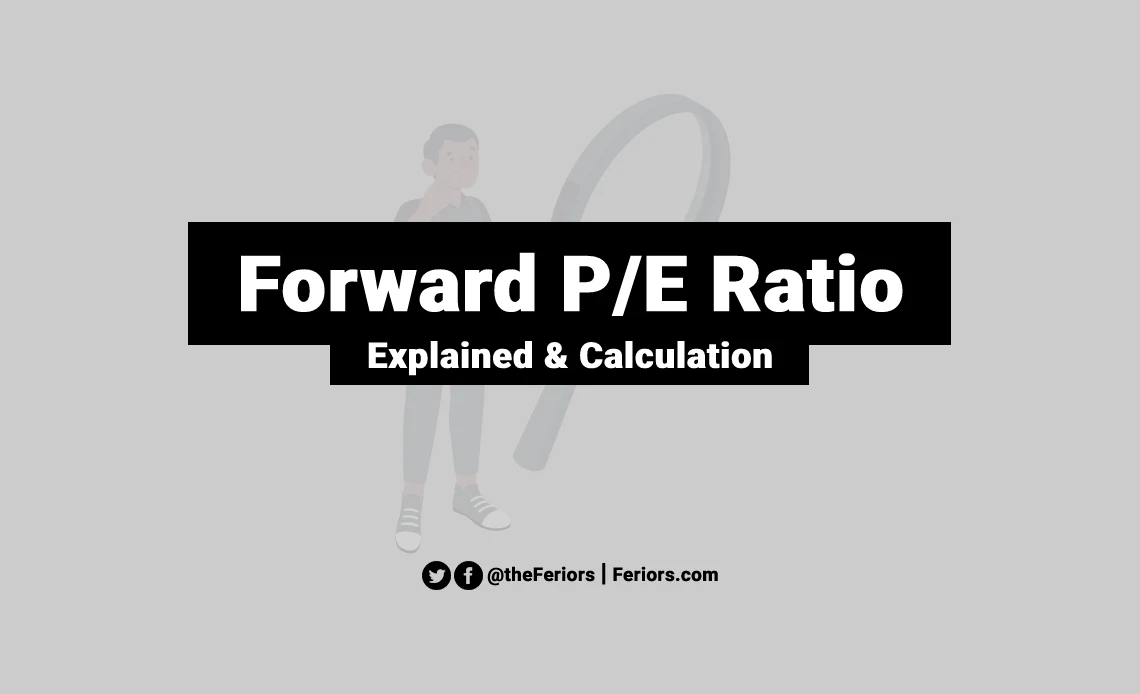What is Forward P/E?
Forward P/E is a financial ratio that compared the current stock price with the estimated earnings per share (EPS) of the next 12 months. The forward P/E can be calculated by dividing a company’s current stock price by its estimated earnings per share (EPS) for the upcoming fiscal year.
The forward P/E ratio differs from the regular P/E ratio, which is calculated by dividing the current stock price by the company’s actual earnings per share over the past 12 months. The forward P/E ratio is considered to be a more accurate reflection of a company’s potential earnings power because it uses future earnings estimates rather than past earnings.
The forward P/E ratio is often used by investors to compare the relative value of different companies within the same industry or sector. A company with a low forward P/E ratio may be seen as undervalued compared to its peers, while a company with a high forward P/E ratio may be seen as overvalued.
However, it’s important to note that the forward P/E ratio is based on estimates and may not always accurately reflect a company’s future earnings.
The Forward P/E Calculation
The forward P/E can be calculated by dividing a company’s current stock price by its estimated earnings per share (EPS) for the next 12 months.
Forward P/E = Current Stock Price / The estimated Earnings Per Share (EPS) for the next 12 months.
For example, if the Feriors company’s stock price is $50 and its estimated EPS for the upcoming fiscal year is $5, then its forward P/E ratio would be 10 ($50 divided by $5).
Note that the forward P/E ratio is based on estimates and may change as new information becomes available. It is important to keep in mind that the forward P/E ratio is only one of many metrics that investors use to evaluate a company’s stock.
The Advantages of Using Forward P/E Ratio
The forward P/E ratio is a financial metric that can provide insights into a company’s future earnings potential and the market’s valuation of the company’s stock. The insights that the forward P/E ratio can provide, including:
The future earnings potential: The forward P/E ratio uses the estimated earnings per share (EPS) for the upcoming fiscal year to calculate the ratio, which provides investors with insight into what a company’s earnings might look like in the future. This can be particularly relevant for companies that are expected to experience significant growth or decline in the future.
The market’s valuation: The forward P/E ratio can help investors evaluate whether a company’s stock is overvalued or undervalued. A higher forward P/E ratio generally indicates that the market has a positive outlook on the company’s future earnings potential, and investors are willing to pay a higher price for the stock. Conversely, a lower forward P/E ratio may indicate that the market has a negative outlook on the company’s future earnings potential, and the stock may be undervalued.
A better comparison to peers: The forward P/E ratio can be more useful than the trailing P/E ratio when comparing a company’s valuation to its peers within the same industry or sector. This is because the forward P/E ratio provides insight into what the market expects for the company’s future earnings potential.
More accurate valuation: The forward P/E ratio can provide a more accurate valuation of a company’s stock than the trailing P/E ratio because it takes into account the expected future earnings. This is particularly relevant for companies that are expected to experience a significant change in earnings in the near future.
More timely: The forward P/E ratio is based on estimates for the upcoming fiscal year, which means that it can be more timely than the trailing P/E ratio, which is based on past earnings. This can be particularly relevant for investors who are looking to make decisions based on current market conditions.



